UN: Weather disasters soar in numbers, cost, but deaths fall
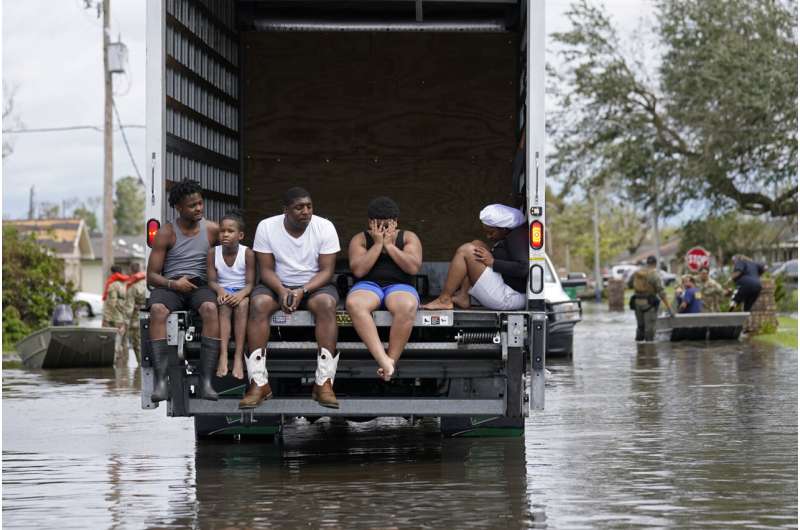
Weather disasters are striking the world four to five times more often and causing seven times more damage than in the 1970s, the United Nations weather agency reports.
But these disasters are killing far fewer people. In the 1970s and 1980s, they killed an average of about 170 people a day worldwide. In the 2010s, that dropped to about 40 per day, the World Meteorological Organization said in a report Wednesday that looks at more than 11,000 weather disasters in the past half-century.
The report comes during a disaster-filled summer globally, including deadly floods in Germany and a heat wave in the Mediterranean, and with the United States simultaneously struck by powerful Hurricane Ida and an onslaught of drought-worsened wildfires.
"The good news is that we have been able to minimize the amount of casualties once we have started having growing amount of disasters: heatwaves, flooding events, drought, and especially ... intense tropical storms like Ida, which has been hitting recently Louisiana and Mississippi in the United States," Petteri Taalas, WMO's secretary-general, told a news conference.
"But the bad news is that the economic losses have been growing very rapidly and this growth is supposed to continue," he added. "We are going to see more climatic extremes because of climate change, and these negative trends in climate will continue for the coming decades."
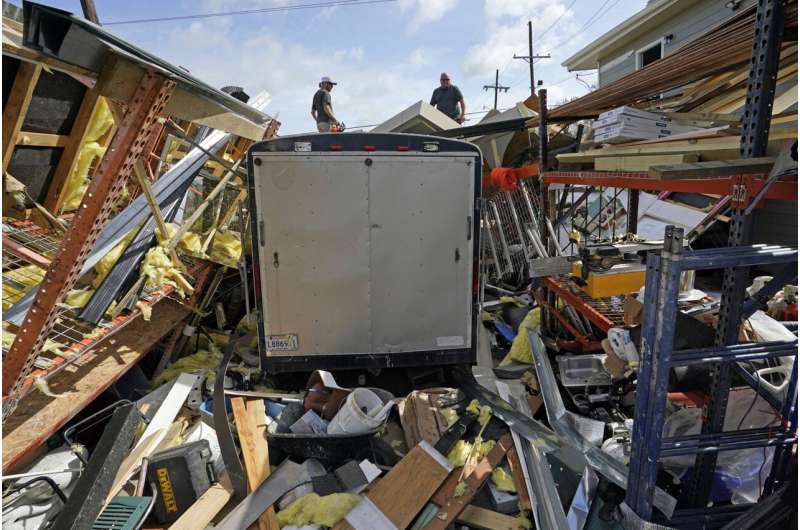
In the 1970s, the world averaged about 711 weather disasters a year, but from 2000 to 2009 that was up to 3,536 a year or nearly 10 a day, according to the report, which used data from the Centre for Research on the Epidemiology of Disasters in Belgium. The average number of yearly disasters dropped a bit in the 2010s to 3,165, the report said.
Most death and damage during 50 years of weather disasters came from storms, flooding and drought.
More than 90% of the more than 2 million deaths are in what the U.N. considers developing nations, while nearly 60% of the economic damage occurred in richer countries.
In the 1970s, weather disasters cost about $175 billion globally, when adjusted to 2019 dollars, the U.N. found. That increased to $1.38 trillion for the period from 2010 to 2019.
What's driving the destruction is that more people are moving into dangerous areas as climate change is making weather disasters stronger and more frequent, U.N. disaster and weather officials said. Meanwhile, experts said, better weather warnings and preparedness are lessening the death toll.
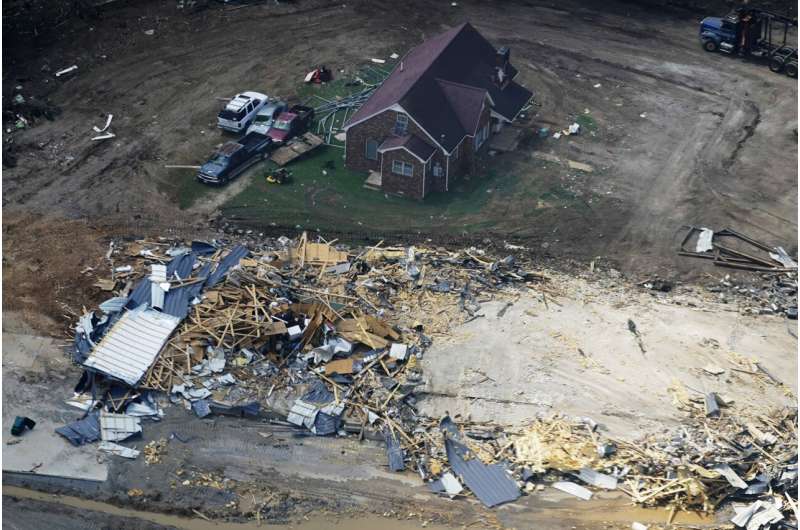
Susan Cutter, director of the Hazards and Vulnerability Research Institute at the University of South Carolina, noted progress in learning to live with risk and protecting ourselves.
"On the other hand, we're still making stupid decisions about where we're putting our infrastructure," she said. "But it's OK. We're not losing lives, we're just losing stuff."
Samantha Montano, an emergency management professor at the Massachusetts Maritime Academy and author of the book "Disasterology," said she worries that death tolls may stop decreasing because of the increase in extreme weather from climate change especially hitting poorer nations.
"The disparity in which countries have had the resources to dedicate to minimizing disaster deaths is of huge concern," particularly due to climate change," she said. "Deaths decreasing in recent decades does not mean that they will continue to do so unless we continue to invest in these efforts."
-
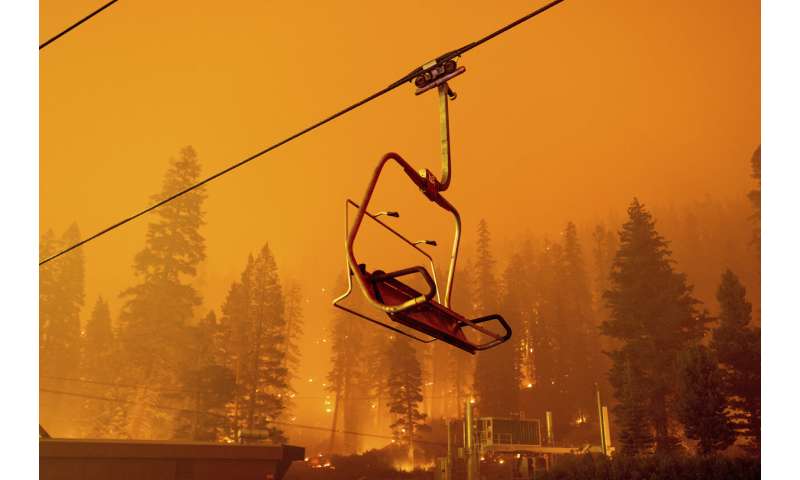
In this Sunday, Aug. 29, 2021, file photo, seen in a long camera exposure, the Caldor Fire burns as a chairlift sits motionless at the Sierra-at-Tahoe ski resort in Eldorado National Forest, Calif. The main buildings at the ski slope's base survived as the main fire front passed. A new report from the United Nations weather agency finds the world is getting several times more weather disasters than in the 1970s. Credit: AP Photo/Noah Berger, File -
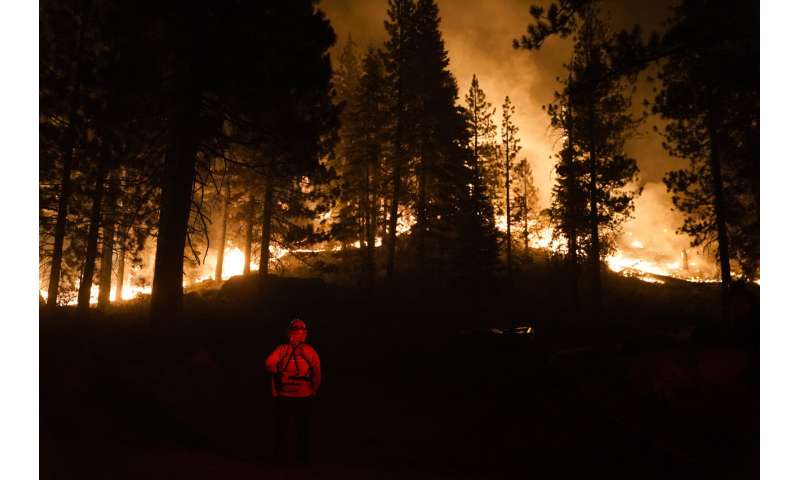
In this Monday, Aug. 30, 2021, file photo, a firefighter monitors the Caldor Fire burning near structures in South Lake Tahoe, Calif. A new report from the United Nations weather agency finds the world is getting several times more weather disasters than in the 1970s. Credit: AP Photo/Jae C. Hong, File -

In this Wednesday, Oct. 26, 2005, file photo, members of the Louisiana Recovery Authority tour New Orlean's hurricane-ravaged Lower 9th Ward. Much of the 9th Ward was destroyed when the levee broke at the Industrial Canal during Hurricanes Katrina and Rita. A new report from the United Nations weather agency finds the world is getting several times more weather disasters than in the 1970s. Credit: AP Photo/Robert F. Bukaty, File -
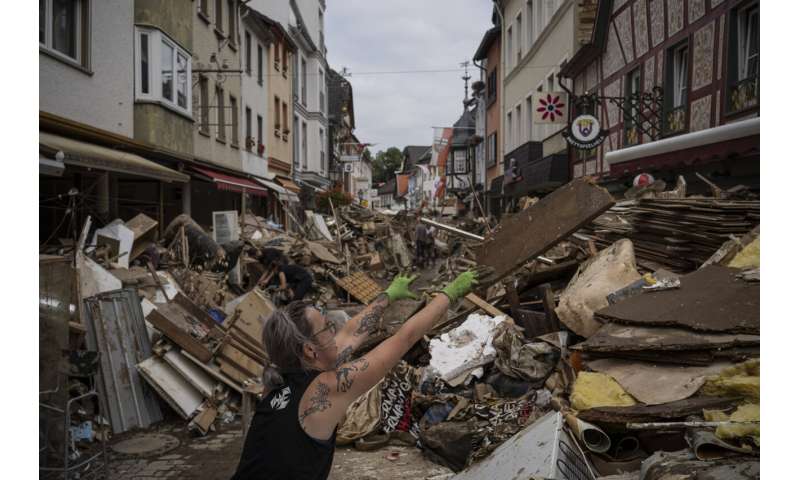
In this Monday, July 19, 2021, file photo, a woman throws away rubbish in the center of Bad Neuenahr-Ahrweiler, Germany, after heavy rainfall turned tiny streams into raging torrents across parts of western Germany and Belgium. A new report from the United Nations weather agency finds the world is getting several times more weather disasters than in the 1970s. Credit: AP Photo/Bram Janssen, File -
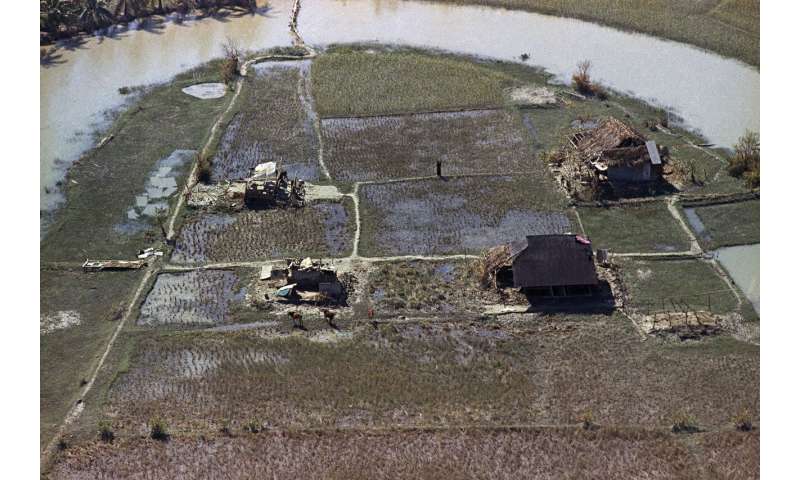
Ruined homes and field are shown in this aerial view in the aftermath of the cyclone that hit the Bay of Bengal in East Pakistan, November 1970. A new report from the United Nations weather agency finds the world is getting several times more weather disasters than in the 1970s. Credit: AP Photo/Harry Koundakjian, File -
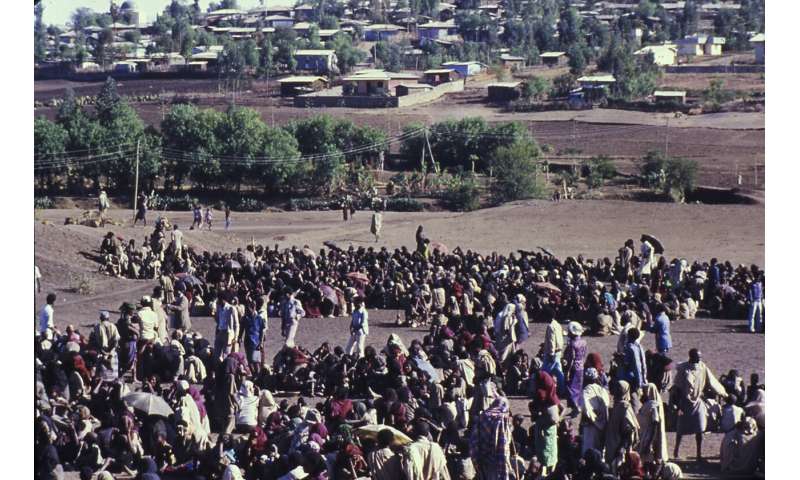
Drought victims sit on the ground at the refugee camp camp in Bati, on the southwestern edge of Ethopia's Danakil Desert area, November 1984. Aircraft from the U.S. and the Soviet Union are used in joint operations to airlift food to the many thousand that have gathered here. A new report from the United Nations weather agency finds the world is getting several times more weather disasters than in the 1970s. Credit: AP Photo/File -
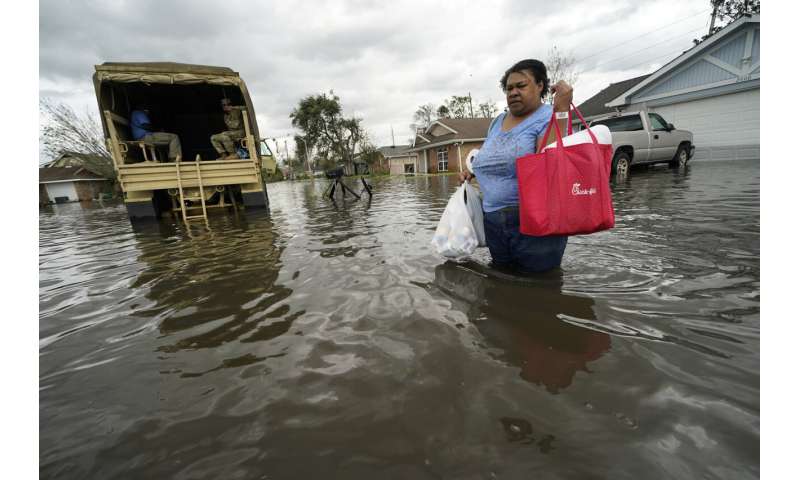
In this Monday, Aug. 30, 2021, file photo, Jerilyn Collins returns to her destroyed home with the assistance of a Louisiana National Guard high-water vehicle to retrieve medicine for herself and her father, and a few possessions, after she evacuated from rising floodwater in the aftermath of Hurricane Ida in LaPlace, La. A new report from the United Nations weather agency finds the world is getting several times more weather disasters than in the 1970s. Credit: AP Photo/Gerald Herbert, File
Hurricane Ida is a good example of heavy damage and what will probably be less loss of life than past major hurricanes, Cutter said. This year, she added, weather disasters "seem to be coming every couple weeks," with Ida, U.S. wildfires and floods in Germany, China and Tennessee.
The five most expensive weather disasters since 1970 were all storms in the United States, topped by 2005's Hurricane Katrina. The five deadliest weather disasters were in Africa and Asia—topped by the Ethiopian drought and famine in the mid 1980s and Cyclone Bhola in Bangladesh in 1970.
© 2021 The Associated Press. All rights reserved. This material may not be published, broadcast, rewritten or redistributed without permission.





















